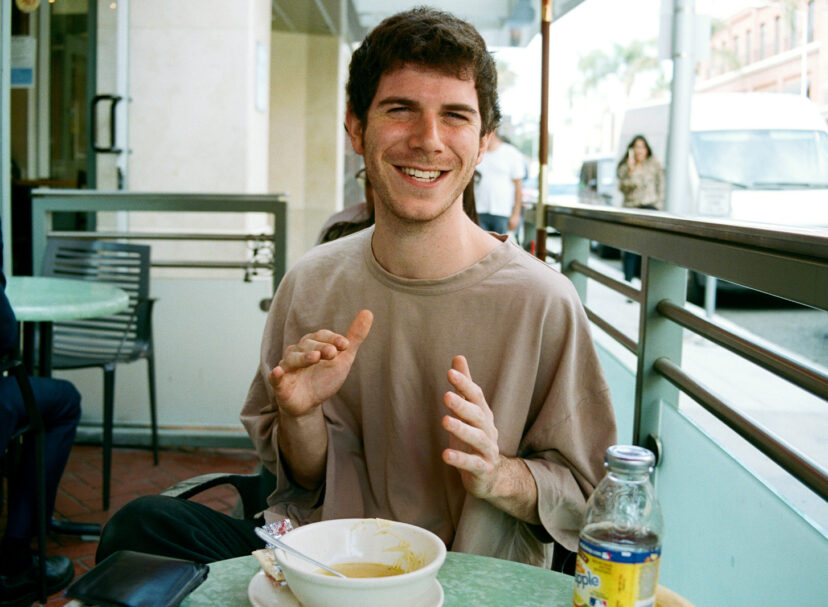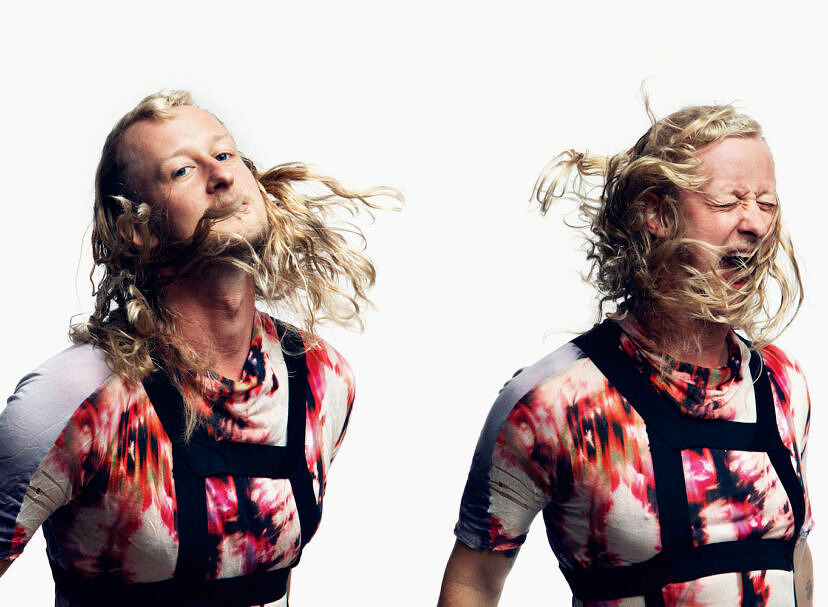Text & Interview: Monica Uszerowicz
Photo & Video: Shoog McDaniel
Last year, I saw the doom/neoclassical duo, Divide and Dissolve, play at a house show—the Melbourne-based, Geelong-Texan band were, finally, on tour. Their set was in a Florida room that felt divorced from the rest of the house as if it were merging into the backyard; it was late spring and uncomfortably warm and their music, I think, prodded some of the early-budding mangos off the trees. They’re heavy, sitting somewhere between drone and doom metal and an ambience that’s less categorical genre than earthly vibration; the songs are big, at once meandering and deliberate, occasionally infused with an eerie saxophone. Afterward, I had a hard time engaging in normal party banter, feeling as though I’d been transported elsewhere.
Heavy music has a way of taking up actual physical space (you can feel it in your bones), which is important for Divide and Dissolve. Comprised of Takiaya Reed and Sylvie Nehill, the band is resolved to dismantle the dangerous, brutally racist attitudes so pervasive in the scene and, in turn, assist in the decolonization of the spaces they occupy—and everywhere else. They just finished another massive tour; a flyer for their Alaskan shows listed locations by their indigenous names, and the band played in territories traditionally occupied by Dena’ina, Tanana Athabascan, and Qutekcak peoples. Along the way, Reed and Nehill met folks on a similar path, musicians, artists, and mental health practitioners alike—this type of healing work is collective.
Their latest album, BASIC, starts with “BLACK IS BEAUTIFUL,” a tense, melodic opener, and ends with “CRIMES OF THE FUTURE,” a poem by artist Minori Sanchiz-Fung, which she recites over soft wind sounds and a rich guitar line. The poem is a descriptive warning of the systemic, racist sickness that intentionally creates criminals and utilizes the prison system as a kind of legalized slavery for black, brown, and indigenous people: “The society that creates crime will not want to witness it/feeling that that itself is a crime…More and more people will be usurped by crime/to make the idea of crime more uncomfortable to the society.” When artists extricate themselves from caring about the world, it feels irresponsible. Divide and Dissolve not only have a mission to offer reclamation and healing but create space for others to do it, too.
On one of the last dates of their tour, while the two were still in Alaska and had just woken up, I spoke to Reed and Nehill over the phone about their travels, their songwriting process, and what’s to come.

How is the tour going, especially right now in Alaska?
Reed: We’re having an amazing time right now, receiving so much inspiration and learning so much. We keep meeting incredible people out here. We happened to meet a bunch of young people doing amazing things—young people who are people of color, black and indigenous people of color, doing amazing work. It’s been really special.
We’ve been meeting a lot of black and indigenous mental health practitioners, too. That work is so important—for people of color to be providing mental health care and facilitating healing and being able to provide a different perspective in the health care field. It’s inappropriate to say that people of color don’t go to metal shows. People have been showing up and it’s been incredible. Lots of people have been coming to be supportive.
You used to deal with a lot of hostile rhetoric—online and offline, often assuming you weren’t even in a band. Has that changed?
Reed: If people don’t know that I’m in my band at the beginning of the night, they definitely know by the end of the night.
Nehill: It’s different at every show, really. Not all shows are the same in that way. We ask to be respected during each show. We ask for people to be quiet and sometimes —no, actually, quite often that happens, which is really cool. A lot of people say that that can’t happen at a metal show, where everyone becomes quiet.
You’re not exactly a metal band, either.
Reed: No. We are for sure a neo-classical heavy band.
Nehill: We don’t really identify as metal, but for some reason, it feels important to play to people who appreciate heavy music.
Reed: It’s really important for us to pay our respects to the traditional owners of the land that we’re on every single night, where we’re playing, and to acknowledge that people are still experiencing terrible things. We’re trying to open up space to talk about this kind of stuff.

When we come together, I feel completely lost in all of our energy. Time, space—they have different types of feelings when we play

Have you encountered people doing that same kind of work in Australia, too, which has also been heavily stripped of its history by colonizers?
Reed: Yeah, there’s a lot of important and cool people throwing down in so-called Australia and so-called United States. People are doing incredible work. Genocide is occurring in both places on tremendous levels, and I guess because of social and governmental structures, it plays out in slightly different ways, but people are still dying in both places and people are still experiencing erasure and assimilation and a physical extermination, as well. There are lots of parallels to be drawn.
I think that’s why it’s important that there is a physicality to your music, for it to literally take up space.
Reed: The experience of our music is incredibly intentional. And we both have different processes of making it.
Nehill: When we come together to make music, we do a lot of the same things. In a short period, we’ll spend a lot of time together and do everything we can together to get on the same page. But then, I don’t know—separately, we come from our own kind of places, musically. My drumming is really physical and responsive and fluid. I’m not necessarily trying to be influenced by other music; I’m trying to respond in a moment and trying to be as heavy as possible. I’m trying to be heavy!—but also to flow.
Reed: When we come together, I feel completely lost in all of our energy. When we play and when we’re done, I ask myself, “Whoa, what happened?” every single time. Time, space—they have different types of feelings when we play.
Have you been able to write and work together while you’re touring at all?
Nehill: We’re working on some stuff right now, and we’ve got a couple of days off. We’re working on stuff whenever we get a chance, but actually, we haven’t had that chance. We’ve only had a day.
Reed: One very special day! This is part of the process, too, though—talking about it. There are a lot of different aspects of writing.
There is a romanticism to being on the road, too, physically encountering the traumatic histories contained in the landscape. There is a lot of information to be gleaned from walking on the land.
Reed: Absolutely. I think it would be impossible for us to not be inspired by the landscape and what we learn. We’re hanging out with a lot of different people and along the way, we learn so many different stories about where we are. You can do as much research as you want, but when you go to a place and meet a person and hear a story that’s been passed down to them through their ancestors, you won’t be able to read about that on Google. It’s most certainly inspiring us, both in writing and in all the things we do.


